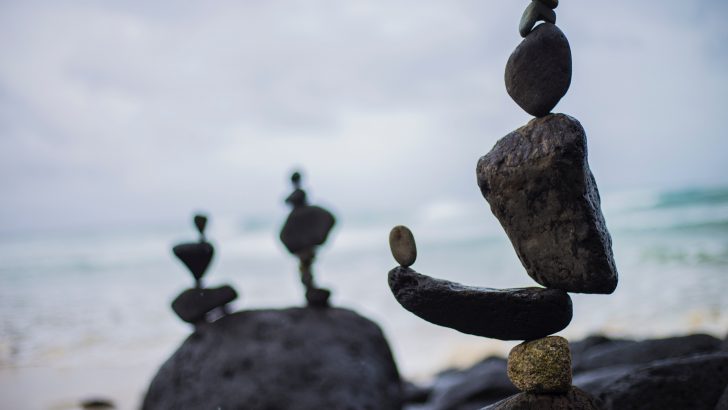Mindful Living
We all need a healthy balance between being and doing in our lives. The pace of modern life draws us into cycles of excessive doing and when that happens, the quality of our doing suffers. Of course, if we allow the pendulum to swing too far in the other direction nothing get’s done! So we need to find a healthy balance between being and doing. The practice of meditation provides a bridge between being and doing. It helps us to discover our true-self and to live life more deeply and with greater authenticity.
Because we have so little experience of simply being, when we deliberately choose to enter that realm through meditation or mindful activities, it can at first appear to be passive, lifeless and boring. But soon we discover that it’s not so much that we are doing nothing as that we are doing nothing else – we are taking care to simply be. The key question is what is the relationship between our doing – our activities of thinking and acting – and our state of being? Meditation changes our understanding of the relationship between them so that we discover that in fact being mode is a nourishing and uplifting state that is always available to you, and can be accessed even in the midst of busy daily activity.
The wisdom traditions and religions of the world tell us that we are healthiest when being is primary over doing, when our being informs and guides our doing; in other words, when all our thinking and actions are fully rooted in a state of being. We spend so much time in doing mode that we can lose track of our essential being. When this occurs we can easily become overwhelmed by continual thinking and activity. We become less aware, less integrated, less mindful. Our focus becomes fixed on satisfying our perceived personal needs and maintaining our conditioned lifestyle.
We cannot arrive at this experience of being through doing, through thinking or reading; we arrive there through silence and stillness.”
So, what must we do to experience our being? We must enter into stillness and silence. In moments of stillness and silence we experience something deeper within ourselves – we might call this our true self. But the silence also mysteriously awakens us to our connectedness to others, to the world around us and the creative energy of the universe. We discover that in stillness and silence we can become free of the bonds of attachment, anxieties, and the desires of the ego. My research into the child’s experience of meditation has taught me that young children discover this for themselves when they meditate. In silence we can learn to let go of the constant distractions of the mind, even if only fleetingly when we first begin to meditate. However once we taste it, even for a moment, we recognise there is more to being human than the thinking mind allows. We come to a heart-felt understanding that meditation brings us mysteriously into communion with pure being. And, as our doing becomes more grounded in that understanding of our essential nature, we find we are becoming more peaceful, more fully aware and more fully connected with ourselves and others.
We cannot arrive at this experience of being through doing, through thinking or reading; we arrive there through silence and stillness. All of the wisdom traditions of the world tell us that stillness represents our path back to being. Meditation may appear to be about pressing the pause button, putting life on hold as it were for a short period. But it is much more than that. It is deeply transformative but the change takes place at a level of consciousness deeper than ordinary self-consciousness. It is only over time that we realise our awareness of who we are has become transfigured. Meditation teaches us that we are not our thoughts, not our emotions. It gives rise to another way of knowing, to an awareness that transcends thinking – unclouded by your thoughts, feelings and emotions. It is only by meditating that you will appreciate that you can simply be yourself, outside of all the labels of mother, father, son, daughter, partner, teacher, colleague, friend. You discover that none of those things defines who you are; nor does our doing define us. Our doing is not who we are.
Being comes before doing. The full richness of the mode of being is best appreciated through direct experience of meditation. As we remain faithful to our meditation we discover that the quality of our being mysteriously determines the quality of our doing. But it is important to appreciate that we cannot enter being mode from a doing mind-set. We have to let go of all expectation of achievement through meditation. Being mode is not devoted to achieving particular goals. In being mode, the focus is on accepting and allowing what is, without any immediate effort to change it.



